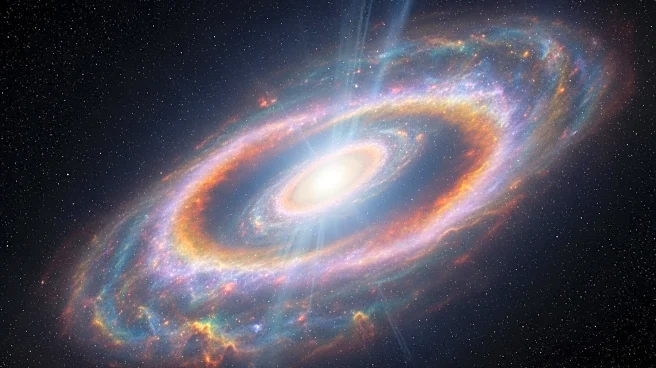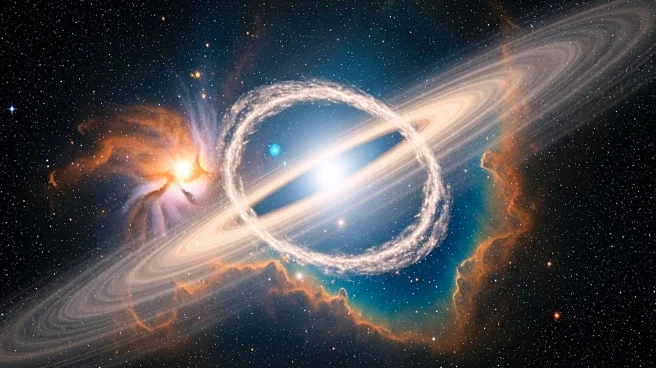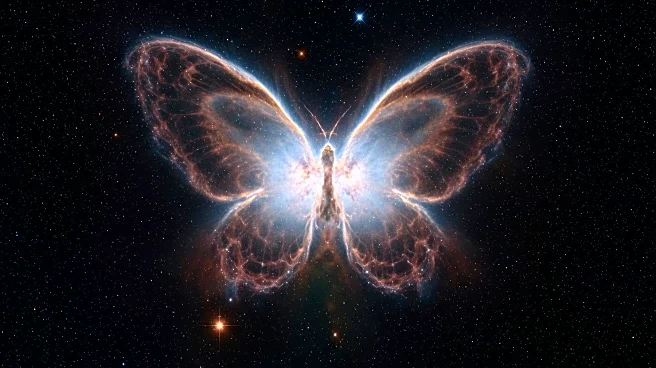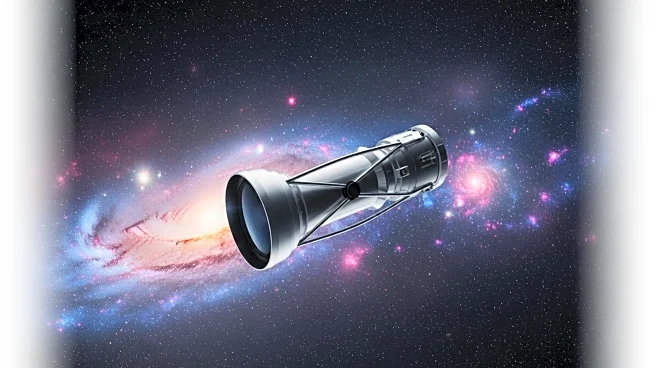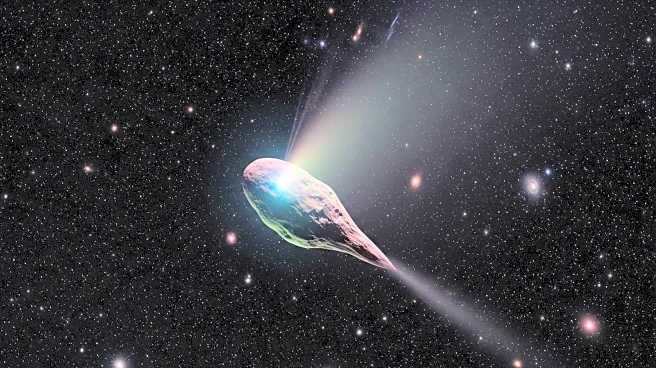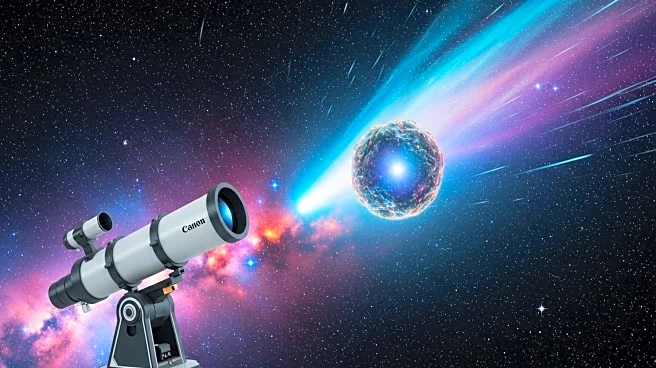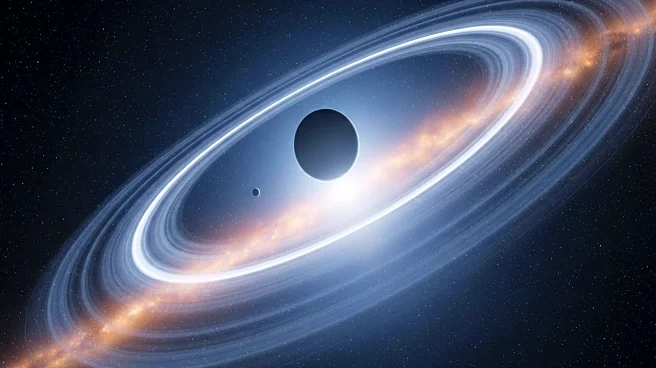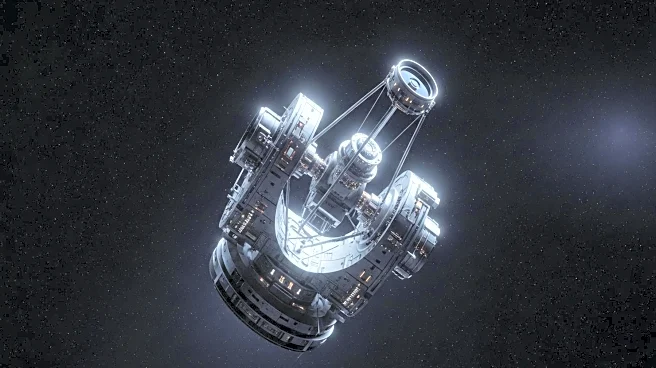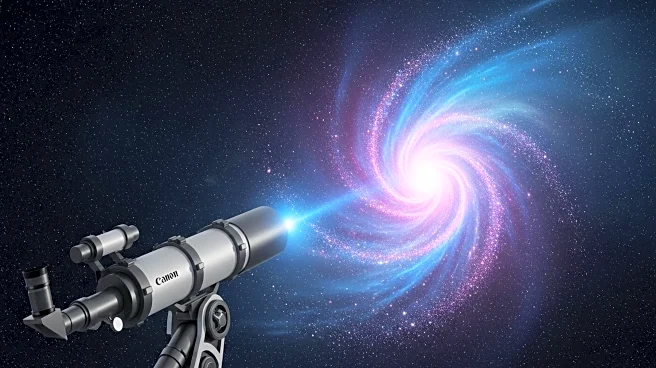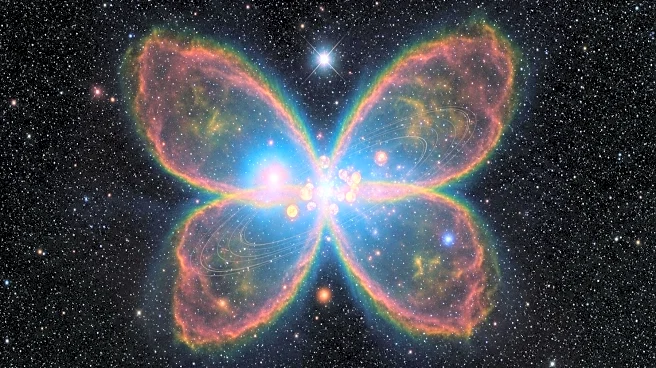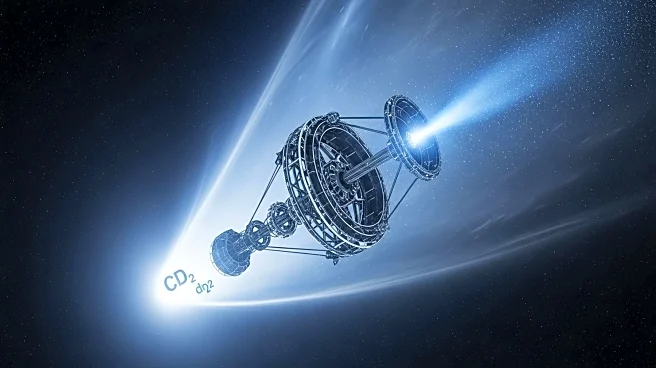What's Happening?
Astronomers using the James Webb Space Telescope (JWST) have identified a peculiar disk of gas and dust surrounding the infant star XUE 10, located approximately 5,550 light-years from Earth in the star-forming region NGC 6357. This protoplanetary disk exhibits an unusual chemical composition, with a high concentration of carbon dioxide and a notably low water content, challenging existing models of planet formation. The discovery was made by the eXtreme Ultraviolet Environments (XUE) collaboration, which studies the impact of intense radiation fields on protoplanetary disk chemistry. The findings suggest that ultraviolet radiation from the host star or nearby massive stars may be altering the disk's chemistry.
Why It's Important?
The discovery of this unusual protoplanetary disk composition has significant implications for understanding planet formation processes. It challenges current models that predict water vapor dominance in the inner regions of planet-forming disks. The high levels of carbon dioxide relative to water could indicate that intense radiation environments, common in massive star-forming regions, are reshaping the building blocks of planets. This understanding is crucial for grasping the diversity of planetary atmospheres and their potential habitability, as most stars and planets form in such regions.
What's Next?
The research team plans to continue studying the effects of extreme radiation environments on protoplanetary disks to better understand the diversity of planetary atmospheres. The findings could lead to revisions in current models of disk chemistry and evolution, potentially impacting theories on planet formation and habitability. Further observations and studies using JWST and other telescopes may provide additional insights into these processes.
